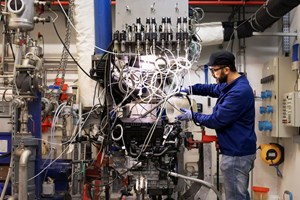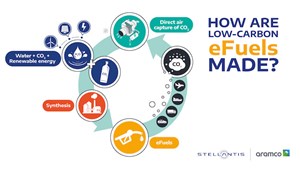News
Aramco and Stellantis collaboration indicates eFuel compatibility with European engine families
Stellantis has concluded that 24 engine families in European vehicles sold since 2014, representing 28 MM vehicles on the road, are ready to use advanced drop-in eFuel without any powertrain modification, following months of testing at its technical centers across Europe. The tests were conducted using surrogate eFuels provided by Aramco, one of the world’s leading integrated energy and chemicals companies.
Low-carbon eFuel is a drop-in synthetic fuel made by reacting CO2, captured either directly from the atmosphere or from an industrial facility, with renewable H2. The use of low-carbon eFuel has the potential to reduce carbon dioxide emissions from existing internal combustion vehicles by at least 70% on a lifecycle basis, compared to conventional fuels.
Ned Curic, Stellantis Chief Engineering and Technology Officer said, “Our priority is providing zero-emission mobility for all with a focus on electrification, while our collaboration with Aramco is an important and complementary step in this journey for existing fleets on the road. We are exploring all solutions to reinforce our ambitious strategy of becoming a carbon net zero company by 2038. Drop-in eFuels can have a massive and almost immediate impact on reducing the CO2 emissions of the existing vehicle fleet, offering our customers an easy and economically efficient option to reduce their carbon footprint—one as simple as choosing a different fuel pump at the station, with no additional modification to their vehicles.”
Amer Amer, Aramco Transport Chief Technologist said, “We are delighted to work with Stellantis, one of the world’s leading automakers, to assess the performance of our fuel formulations that are designed to represent expected eFuel characteristics in its existing vehicle engines. The results of the testing reinforce our view that synthetic fuel can be a drop-in solution in existing vehicles, and when produced via a low-carbon pathway it can play an important role in reducing carbon emissions in the transport sector and supporting an orderly energy transition.”



